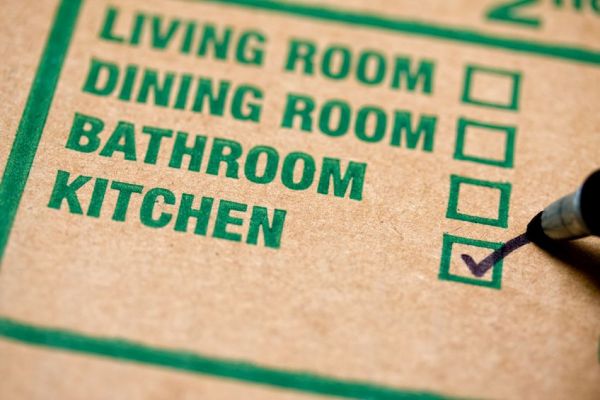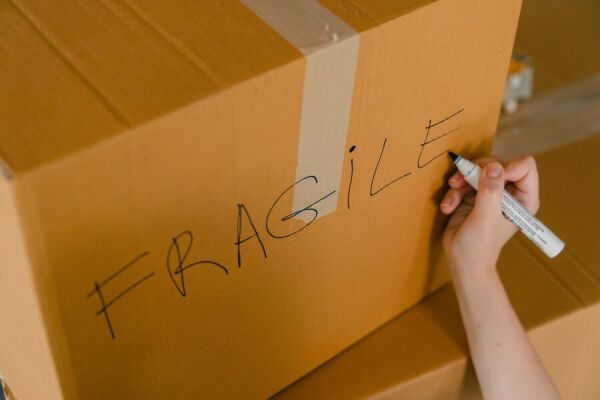You’ve got a lot to think about before, during, and after a move—the last thing you want to worry about is what to do if your stuff gets damaged during the move. After all, when you hire a professional mover or shipping company, you expect that you’re putting your prized possessions in the hands of, well, professionals!
Sadly, things can still get damaged during a move, even when the pros are in charge. The question is, what do you do if your things are damaged by your movers or shipping company? We’ll tell you. Here’s a step-by-step action plan to follow in case some of your belongings get damaged (or worse, go missing) during a move.
1. Take Inventory
While it may seem like a daunting task, taking a detailed inventory is a crucial step in the moving process, especially if you’ve hired movers or are shipping your stuff. Trust us—you’ll be glad you took time to make an inventory in case things do get damaged or lost during a move.
If you choose to hire a moving company to handle all your packing as well as moving, they will create an inventory list of all the items they pack for you. However, it’s still a good idea to make your own list, especially if you do all the packing yourself. Create a list for each room, or organize your lists by personal items, valuables, furniture, decor, etc. Make an itemized list of everything you’re moving and make note of which box each item gets packed into.
Sometimes things get lost, particularly during an out of state move, so however you choose to organize your lists, you’ll be glad you have them on the other end to confirm everything made the move safely.
2. Do a Walkthrough
Before a single item gets put on the moving truck, do a quick walk through your house with your moving team. It shouldn’t take more than 10 or 15 minutes to make sure everything is on your inventory list and to go over how certain items will be protected and loaded. For instance, large items may need to be moved through a sliding glass door rather than a front door, and fragile items like glass top tables and mirrors will need to be properly wrapped to avoid breakage or scratching.
Be sure to take pictures of your belongings before they’re moved so you have documentation of their condition prior to the move, especially if they are valuable, sentimental, or antique items. You’ll need these for an insurance claim in case something gets damaged in transition.
3. Documenting Damage & Determining Responsibility
When your belongings arrive at your new location, immediately check your inventory list to make sure everything arrived. This is also the time to inspect items for damage.
If you find that some of your items have been damaged during the move, start by taking pictures of the damage.
Before you file an insurance claim, you’ll have to get clear on who is responsible for the damage. If the moving or shipping company you hired caused damage to some of your property or belongings, you may be able to file a claim depending on the type of insurance you took out with your movers or shipping company. If so, you’ll need proof of the damage that occurred during transport. That’s why it’s important to take photos of your items before and after the move, especially for valuable, sentimental, and antique pieces.
If your items are boxed or crated and you notice that the packaging is damaged, take pictures of any damage prior to opening the box or crate. Be sure to write down any issues you notice before you sign any paperwork from the movers.
4. Filing a Claim
If you alert your movers to the damage and they try to settle on the spot, politely decline—you may be entitled to more than they’re offering. In fact, the Federal Motor Carrier Safety Administration, which regulates moving companies, says:
"Movers are prohibited from having you sign a receipt which relieves the mover from all liability for loss or damage to the shipment. Do not sign any receipt which does not provide that you are signing for your shipment in apparent good condition except as noted on the shipping documents."
Instead, pay your bill in a timely manner and follow the proper procedure regarding damages. Call or email your moving company to report the damage and ask about the resolution process. You’ll likely have to fill out some paperwork and submit pictures. If for any reason you’re unable to solve your dispute with the moving or shipping company, you can file a formal complaint with the Better Business Bureau, or hire an attorney and take the matter to court.
What About Moving Insurance?
The term “less is more” does not apply when considering which moving insurance package to choose, especially if you’re moving long distance. Most states have federally mandated insurance laws when it comes to moving, but we recommend working with a professional moving company that offers extra coverage against loss and damage. This is particularly important when you’re moving to a new state that may have different insurance requirements.
Under federal law, out-of-state movers are required to offer two liability coverage options:
- Full Value Protection, whereby your mover is responsible for the replacement value of lost or damaged items in your entire shipment. TSI’s full service expedited long distance moving services include full value protection insurance. This coverage is optional for most services, so be sure to ask your logistics expert prior to finalizing your booking
- Limited Liability Protection (aka Release Value Protection), whereby your mover is responsible for no more than 60 cents per pound per article. This option should be offered at no extra charge, but be careful—the coverage is not extensive. If you choose this option, check your homeowners insurance to see if it will give you the remaining coverage you need. If not, we recommend adding third-party insurance coverage to Release Value Protection.
Every state has its own set of regulations that govern moves within that state. If you’re not moving out of state, you’ll need to check with your local state moving association for legal information about moving within your state.
TSI TIP: Movers are required by federal regulations to provide you with the Your Rights and Responsibilities When You Move booklet.
How To Prevent Damage During a Move
Sometimes things happen and belongings get damaged during a move. Properly packing boxes and preparing furniture for transport can reduce the chance of damage, but there’s no fool-proof way to avoid it altogether.
The best way to increase the odds that your items will make it to the new location safe and sound is to pack everything properly, or leave packing and prep to the pros. Read our Room by Room Guide to Packing your Home for all our best packing tips.
Moving Long Distance?
TSI can help you get your belongings where they need to go for less.





